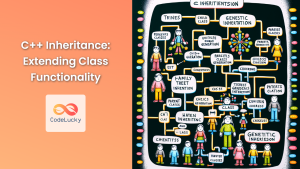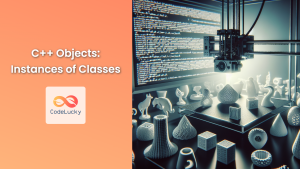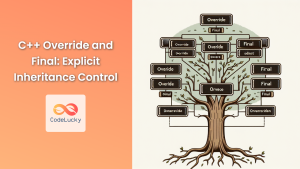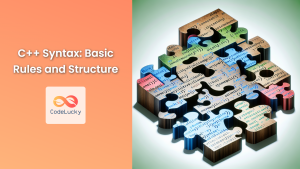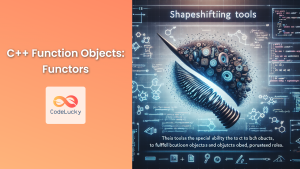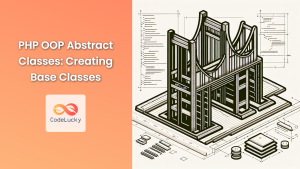In the realm of object-oriented programming, abstract classes and pure virtual functions are powerful concepts that enable developers to create robust and flexible software designs. These features are particularly important in C++, where they form the backbone of many advanced programming techniques. In this comprehensive guide, we'll dive deep into the world of abstract classes and pure virtual functions, exploring their syntax, usage, and real-world applications.
Understanding Abstract Classes
Abstract classes are special classes that cannot be instantiated directly. They serve as base classes for other classes, providing a common interface and potentially some implementation details. The key characteristic of an abstract class is that it contains at least one pure virtual function.
🔑 Key Point: Abstract classes are used to define interfaces and provide a partial implementation for derived classes.
Let's start with a simple example to illustrate the concept:
class Shape {
public:
virtual double area() const = 0; // Pure virtual function
virtual double perimeter() const = 0; // Pure virtual function
virtual void display() const {
std::cout << "This is a shape." << std::endl;
}
};
In this example, Shape is an abstract class. It declares two pure virtual functions, area() and perimeter(), and provides a concrete implementation for the display() function.
Pure Virtual Functions
Pure virtual functions are virtual functions that are declared in a base class but have no implementation in that class. They are denoted by the = 0 syntax at the end of their declaration.
💡 Fact: Pure virtual functions make a class abstract, preventing direct instantiation of that class.
Let's expand our Shape example by creating some derived classes:
class Circle : public Shape {
private:
double radius;
public:
Circle(double r) : radius(r) {}
double area() const override {
return 3.14159 * radius * radius;
}
double perimeter() const override {
return 2 * 3.14159 * radius;
}
};
class Rectangle : public Shape {
private:
double width, height;
public:
Rectangle(double w, double h) : width(w), height(h) {}
double area() const override {
return width * height;
}
double perimeter() const override {
return 2 * (width + height);
}
};
Now we have concrete classes Circle and Rectangle that inherit from the abstract Shape class. These classes provide implementations for the pure virtual functions area() and perimeter().
Working with Abstract Classes
Let's see how we can use these classes in practice:
int main() {
// Shape shape; // Error: Cannot instantiate abstract class
Circle circle(5);
Rectangle rectangle(4, 6);
Shape* shapes[] = {&circle, &rectangle};
for (const auto& shape : shapes) {
shape->display();
std::cout << "Area: " << shape->area() << std::endl;
std::cout << "Perimeter: " << shape->perimeter() << std::endl;
std::cout << std::endl;
}
return 0;
}
This code demonstrates polymorphism in action. We create an array of Shape pointers, which can hold pointers to any class derived from Shape. We then iterate through this array, calling the virtual functions on each object.
Output:
This is a shape.
Area: 78.5398
Perimeter: 31.4159
This is a shape.
Area: 24
Perimeter: 20
Benefits of Abstract Classes and Pure Virtual Functions
-
Interface Definition: Abstract classes provide a way to define interfaces that derived classes must implement.
-
Code Reuse: Common functionality can be implemented in the abstract base class.
-
Polymorphism: Abstract classes enable polymorphic behavior, allowing for more flexible and extensible code.
-
Design Contracts: Pure virtual functions act as contracts that derived classes must fulfill.
Advanced Example: Shape Hierarchy
Let's expand our shape hierarchy to include more complex shapes and demonstrate some advanced concepts:
class Shape {
public:
virtual double area() const = 0;
virtual double perimeter() const = 0;
virtual void scale(double factor) = 0;
virtual std::string name() const = 0;
virtual ~Shape() = default; // Virtual destructor
void printInfo() const {
std::cout << "Shape: " << name() << std::endl;
std::cout << "Area: " << area() << std::endl;
std::cout << "Perimeter: " << perimeter() << std::endl;
}
};
class Circle : public Shape {
private:
double radius;
public:
Circle(double r) : radius(r) {}
double area() const override {
return 3.14159 * radius * radius;
}
double perimeter() const override {
return 2 * 3.14159 * radius;
}
void scale(double factor) override {
radius *= factor;
}
std::string name() const override {
return "Circle";
}
};
class Rectangle : public Shape {
private:
double width, height;
public:
Rectangle(double w, double h) : width(w), height(h) {}
double area() const override {
return width * height;
}
double perimeter() const override {
return 2 * (width + height);
}
void scale(double factor) override {
width *= factor;
height *= factor;
}
std::string name() const override {
return "Rectangle";
}
};
class Triangle : public Shape {
private:
double a, b, c; // Side lengths
public:
Triangle(double side1, double side2, double side3) : a(side1), b(side2), c(side3) {}
double area() const override {
double s = (a + b + c) / 2; // Semi-perimeter
return std::sqrt(s * (s - a) * (s - b) * (s - c)); // Heron's formula
}
double perimeter() const override {
return a + b + c;
}
void scale(double factor) override {
a *= factor;
b *= factor;
c *= factor;
}
std::string name() const override {
return "Triangle";
}
};
Now let's use these classes in a more complex scenario:
#include <vector>
#include <memory>
int main() {
std::vector<std::unique_ptr<Shape>> shapes;
shapes.push_back(std::make_unique<Circle>(5));
shapes.push_back(std::make_unique<Rectangle>(4, 6));
shapes.push_back(std::make_unique<Triangle>(3, 4, 5));
std::cout << "Original Shapes:" << std::endl;
for (const auto& shape : shapes) {
shape->printInfo();
std::cout << std::endl;
}
std::cout << "Scaled Shapes (factor 1.5):" << std::endl;
for (auto& shape : shapes) {
shape->scale(1.5);
shape->printInfo();
std::cout << std::endl;
}
return 0;
}
This example demonstrates several advanced C++ features:
- Use of
std::unique_ptrfor memory management. - Use of
std::vectorto store a collection of shapes. - Polymorphic behavior through the use of the abstract
Shapeclass. - The
scalefunction showing how we can modify the state of derived classes through the base class interface.
Output:
Original Shapes:
Shape: Circle
Area: 78.5398
Perimeter: 31.4159
Shape: Rectangle
Area: 24
Perimeter: 20
Shape: Triangle
Area: 6
Perimeter: 12
Scaled Shapes (factor 1.5):
Shape: Circle
Area: 176.715
Perimeter: 47.1239
Shape: Rectangle
Area: 54
Perimeter: 30
Shape: Triangle
Area: 13.5
Perimeter: 18
Best Practices and Considerations
When working with abstract classes and pure virtual functions, keep these best practices in mind:
-
🛠️ Always declare a virtual destructor in your abstract base class to ensure proper cleanup of derived classes.
-
🔒 Use the
overridekeyword when implementing pure virtual functions in derived classes to catch errors at compile-time. -
📊 Consider making non-virtual functions in the base class
finalto prevent derived classes from overriding them. -
🔍 Use abstract classes to define interfaces that multiple classes can implement, promoting code reuse and flexibility.
-
🧩 Combine abstract classes with templates for even more powerful and flexible designs.
Conclusion
Abstract classes and pure virtual functions are fundamental concepts in C++ that enable developers to create flexible, extensible, and maintainable code. By providing a mechanism for defining interfaces and enabling polymorphic behavior, these features form the backbone of many advanced C++ programming techniques.
Through the examples we've explored, from simple shape hierarchies to more complex scenarios involving modern C++ features, we've seen how abstract classes and pure virtual functions can be used to create robust and flexible designs. As you continue your journey in C++ programming, mastering these concepts will undoubtedly enhance your ability to create sophisticated and efficient software solutions.
Remember, the power of abstract classes lies not just in what they allow you to do, but in how they shape your thinking about software design. By forcing you to consider the essential behaviors that define a class of objects, abstract classes and pure virtual functions guide you towards creating more thoughtful, modular, and reusable code.




